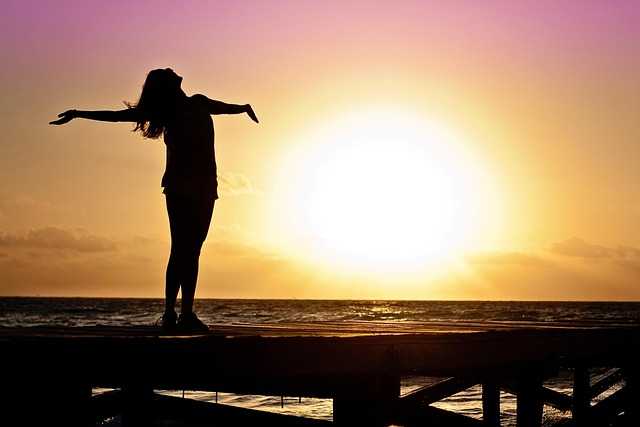Table of Contents
- Exploring the Allure of Watercolor Landscapes
- Essential Techniques for Capturing Nature’s Beauty
- choosing the Right Materials for Stunning Watercolor Art
- Inspiration from Master Artists: Learning Through Their Landscapes
- Q&A
- Wrapping Up


Exploring the Allure of Watercolor Landscapes
Watercolor landscapes evoke a sense of tranquility and wonder, pulling viewers into a world where color dances and shapes blend harmoniously. The spontaneity of watercolor as a medium allows for unique interpretations of natural scenes, enabling artists to capture the fleeting moments of light and atmosphere. Each painting tells a story,inviting the audience to immerse themselves in the delicate swirls and washes that characterize this art form.
One of the most enchanting aspects of watercolor landscapes is their ability to convey emotion through color choice and brush techniques. Artists often employ various methods to achieve distinct effects, such as:
- Lifting: Removing paint to create highlights.
- Wet-on-dry: Applying wet paint onto dry paper for sharp edges.
- Glazing: Layering transparent washes to build depth.
These techniques allow for a rich tapestry of textures and tones that resonate deeply with viewers, often prompting a personal connection to the scenery depicted.
In addition to their aesthetic appeal, watercolor landscapes offer practical benefits for aspiring artists. The medium is generally more forgiving than others, allowing for experimentation without the fear of irreversible mistakes. portable and easy to clean, watercolor supplies can accompany artists on outdoor excursions, making en plein air painting a feasible and enjoyable experience.
As we delve into the world of watercolor landscapes, it’s essential to recognize the inspiration that nature provides. Artists frequently draw upon local environments, from serene beaches to rugged mountains, which encourages a deep appreciation for the beauty surrounding us. The illustration below showcases a simple comparison table of popular subjects in watercolor landscapes, highlighting elements that resonate in various scenes.
| Landscape Type | Common Elements | Color Palette |
|---|---|---|
| Mountains | Peaks, Clouds, Foreground Vegetation | Cool Tones, Earthy Shades |
| Rivers | Water Reflections, Banks, Surrounding Flora | Blues, Greens, Soft Pastels |
| Forests | Trees, Sunlight beams, Underbrush | Rich Greens, Warm Browns, Golden hues |
Essential Techniques for Capturing Nature’s Beauty
to truly bring the vibrancy of nature into your watercolor landscapes, mastering brush techniques is paramount. wet-on-wet allows colors to blend spontaneously, creating soft edges and atmospheric effects perfect for capturing the essence of distant hills or gentle skies. Conversely, the wet-on-dry technique empowers you to define sharper details, ideal for foreground elements like trees and rocks, ensuring they stand out against a more fluid background. Combine these techniques thoughtfully to add depth and dimension to your work.
Color selection plays a crucial role in portraying the subtleties of nature. Utilize a palette that reflects the natural environment you’re depicting. Consider focusing on earthy tones and soft pastels, which can elevate your landscape’s realism. Organize your colors by creating a simple color wheel or arrange them on your palette to visualize harmony. When layering colors, start with lighter shades and gradually build up to darker hues, which mimics the natural progression of light and shadow.
One essential element often overlooked is the composition of your landscape. A well-balanced composition guides the viewer’s eye across the painting, making the scene feel alive and inviting. Experiment with the rule of thirds: divide your canvas into a 3×3 grid and place focal points along these lines or intersections. This technique fosters visual interest and helps convey the grandeur of your surroundings in a more dynamic way.
don’t shy away from experimentation. Nature is ever-changing and unpredictable; reflect this by incorporating unexpected elements such as splatter effects or salt texture to evoke a sense of spontaneity. Additionally, maintaining a consistent painting schedule can enhance both your skill set and creative voice, allowing you to capture fleeting moments in nature whether it’s the shift of light at dawn or the rustle of leaves in the wind.


Choosing the Right materials for Stunning Watercolor Art
When embarking on the journey of creating captivating watercolor landscapes, selecting the right materials can dramatically enhance your creativity and results. The foundation begins with choosing the right watercolor paper. Look for papers with a high cotton content, typically at least 100% cotton, as they offer superior absorbency and texture, allowing your paints to flow gracefully. Look for weights of 200 lb or 300 lb for heavy applications, while lighter options can be grate for sketching and layering.
Next, consider your choice of watercolor paints. Professional-grade paints contain higher pigment concentrations than student-grade options, providing richer colors and better lightfastness. Brands like Winsor & newton and Sennelier are renowned for their exceptional quality. You might also explore watercolor pans for convenience or tubes if you’re looking for a more vibrant mix-both have their distinct uses depending on your artistic approach.
Additionally, the selection of brushes plays a crucial role in the final outcome of your piece. Opt for a variety of shapes and sizes to achieve different effects. A few essential brush types include:
- Round brushes for detail and washes
- flat brushes for bold strokes and washes
- Fan brushes for texture and foliage
Lastly, don’t overlook the importance of water containers and mixing palettes.A dedicated palette with wells allows for organized mixing of colors, while a clean container with enough water ensures your brushes remain in pristine condition. consider using a traveling watercolor set if you plan to paint en plein air; these often come equipped with everything you need in a compact format.


Inspiration from Master Artists: Learning Through their Landscapes
Exploring the creations of master artists can provide invaluable lessons in crafting stunning watercolor landscapes. Artists such as Claude Monet and J.M.W. Turner have left a legacy of techniques that young and seasoned artists alike can draw inspiration from. Their ability to manipulate light, shade, and color offers a masterclass in achieving depth and dimension. Observing their choices in palette and brushwork can ignite creative sparks, encouraging you to experiment boldly with your own watercolor compositions.
One of the most compelling aspects of these artists’ landscapes is their keen attention to the natural environment. monet’s Impression, Sunrise invites viewers to feel the misty ambiance of the early morning, demonstrating how mood can be conveyed through color manipulation. Similarly,Turner’s dynamic skies often showcase dramatic contrasts between light and storm. Here are a few techniques to implement in your own work:
- Capturing light: Use contrasting colors to depict light and shadow.
- Color Blending: Experiment with wet-on-wet techniques to create soft gradients.
- Textural Layers: Incorporate dry brush techniques for added texture in landscapes.
Analyzing the composition of a watercolor landscape can also reveal insightful patterns. For example, creating a balanced focal point while leading the viewer’s eye through the entire piece is key to engaging your audience. You can use the table below to note essential aspects of composition that resonate across artists’ works:
| Aspect | Monet’s Approach | Turner’s Technique |
|---|---|---|
| Focal Point | Use of light to draw attention | Contrast between elements |
| Depth | Layering of colors | Atmospheric perspective |
| Movement | Brushstrokes that guide the eye | Dramatic sky effects |
Ultimately, infusing your watercolor landscapes with lessons from master artists can lead to greater artistic growth and personal expression. Allow yourself to be inspired by their techniques and unique perspectives on nature. By embracing elements of their approaches, you can cultivate your own distinctive style while paying homage to those who paved the way for modern watercolor artistry.
Q&A
Q&A: Exploring the World of Watercolor Landscapes
Q1: What is a watercolor landscape?
A1: A watercolor landscape is a piece of art that captures the beauty of natural scenery using watercolor paints. It involves the careful blending of colors on paper to depict elements such as mountains, forests, rivers, and skies, resulting in soft, fluid visuals that evoke the essence of the outdoors.
Q2: Why choose watercolor for landscape painting?
A2: Watercolor is favored for landscapes because of its unique ability to create a sense of depth and atmosphere. the clarity of the medium allows for layering and blending, resulting in luminous effects that can mimic the natural play of light and shadow in the landscape. Plus, its fluid nature can convey movement, making scenes more dynamic.
Q3: What are the essential supplies for painting watercolor landscapes?
A3: To start painting watercolor landscapes, an artist needs high-quality watercolor paints, a selection of brushes, watercolor paper (preferably 300 gsm for better water retention), a palette for mixing colors, and clean water. Some artists might also use masking fluid to preserve areas of white paper,while others may prefer inks or pencils for preliminary sketches.
Q4: How can beginners get started with watercolor landscape painting?
A4: Beginners should start by familiarizing themselves with basic watercolor techniques like wet-on-wet and wet-on-dry methods. practicing simple compositions, such as a single tree or a sunset, can build confidence. It’s also helpful to study the work of established watercolorists and practice sketching outdoors to capture real-life scenes.
Q5: What common challenges do artists face when painting landscapes in watercolor?
A5: One common challenge is managing water levels; too much water can lead to muddy colors while too little can make blending challenging. Additionally, controlling the flow and saturation of paint can be tricky, as watercolors can behave unpredictably.Artists often need to practice patience and experimentation to develop their skills.
Q6: Are there any tips for achieving realistic effects in watercolor landscapes?
A6: To achieve realism,focus on observing and replicating the colors found in nature. Utilizing a limited color palette can help create harmony in your painting. Additionally, pay attention to the light source, as it dramatically affects how colors appear. Lastly,layering translucent washes can build depth and complexity.
Q7: How do artists decide on a composition for their landscape paintings?
A7: Artists often start with sketches, using techniques such as the rule of thirds to create a balanced composition. They may also consider the foreground, midground, and background elements to add depth. Choosing a focal point, whether it’s a distinctive tree or a distant mountain, can help draw the viewer’s eye into the piece.
Q8: Can watercolor landscapes be used for other purposes besides fine art?
A8: Absolutely! Watercolor landscapes are popular for a variety of applications, including home décor, greeting cards, and even illustrations in books. Many artists also use watercolor landscapes as a form of visual journaling or as a therapeutic practice to unwind and connect with nature.
Q9: How do artists find inspiration for their watercolor landscapes?
A9: Inspiration can be found everywhere-in the changing seasons, during travels, or even in local parks. Many artists keep a travel journal or sketchbook to document colors, shapes, and scenery they encounter. Online platforms like Instagram and Pinterest also serve as great sources for discovering stunning landscapes from around the world.
Q10: What are some renowned watercolor landscape artists to study?
A10: Some notable watercolor landscape artists include Joseph Zbukvic, Edward Wesson, and Alvaro Castagnet. Studying their techniques and styles can provide new ideas and inspire your own work. Many of these artists share tutorials and insights through workshops, online courses, or books, making them accessible to aspiring painters everywhere.
By delving into these questions, artists and enthusiasts alike can appreciate the intricacies of watercolor landscapes, enriching both their practice and understanding of this beautiful art form.
